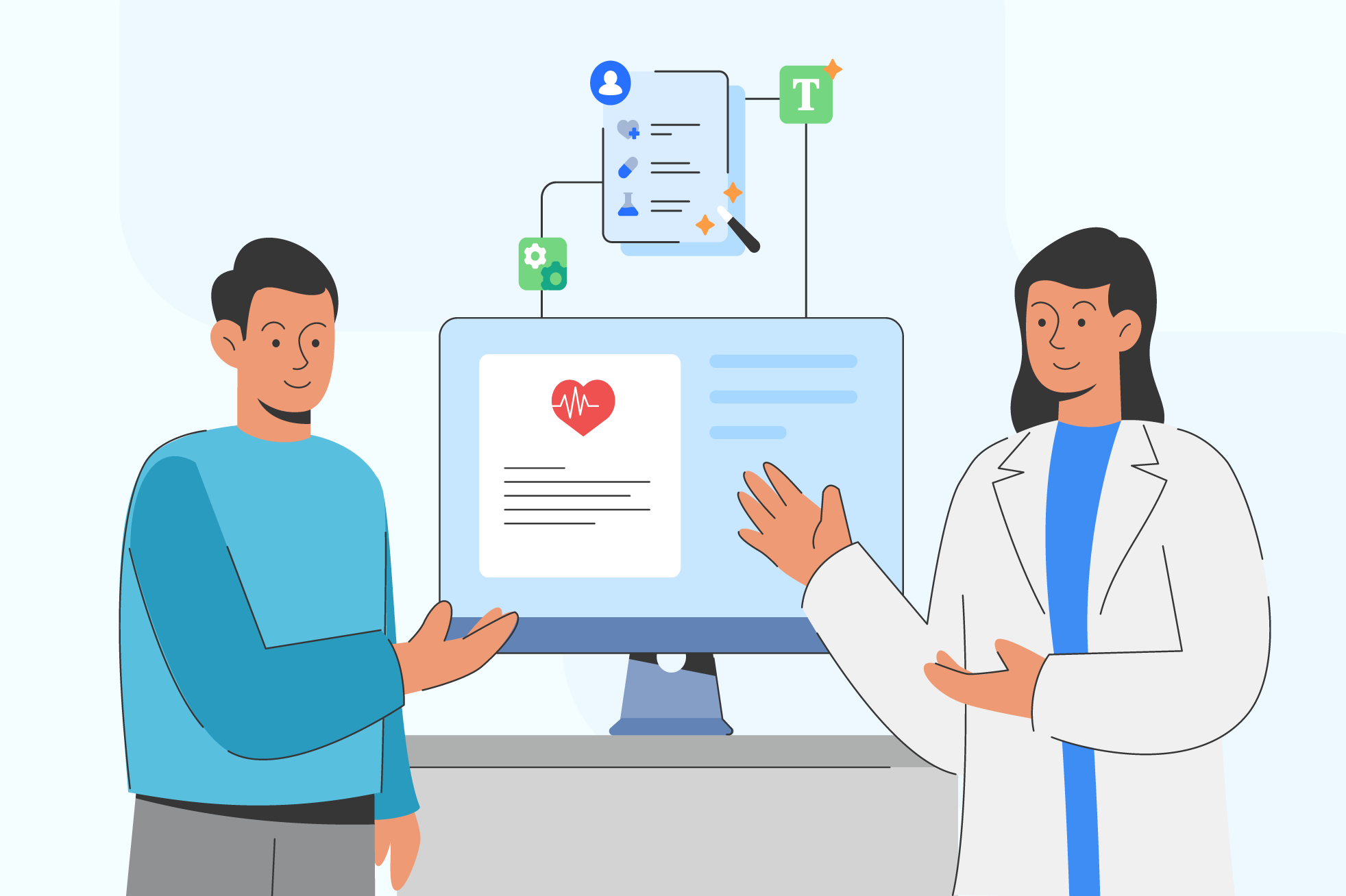What is an EHR (Electronic Health Record)?

What is an EHR?
An Electronic Health Record, or EHR, is essentially a digital form of a patient's traditional paper chart.
It's a core aspect of health information technology that allows health care providers to access and share a patient’s medical records with speed and security.
EHRs aren’t just about storing static information; they are dynamic resources for collecting a comprehensive range of data that spans from medical history to treatment details.
This makes them invaluable for ensuring continuity of care, enabling quick decision-making, and improving the overall coordination of health services for a patient.
This system is designed to extend beyond mere data collection, providing a more complete view of a patient's health journey.
What are the benefits of an EHR?
Electronic Health Records (EHRs) provide significant benefits at both individual and group levels in healthcare settings. Here are some key advantages:
- Reduce and prevent medical errors: By maintaining accurate, up-to-date medical information, EHRs minimize the chances of errors in patient treatment, enhancing patient safety.
- Improve care delivery: Doctors have immediate access to complete health records, which improves their ability to make informed treatment decisions and provide better care.
- Safety alerts: EHRs can flag potential safety issues or alert providers about adverse events before they occur, preventing complications.
- Clearer patient records: They ensure that every detail of patient treatment is recorded clearly, reducing ambiguities and improving communication among healthcare providers.
- Enhanced medical billing and coding: Streamlining the billing process, EHRs reduce administrative burdens and improve accuracy in medical coding and insurance claims.
- Insight into patient trends: EHRs allow healthcare providers to analyze data across groups of patients to identify trends and patterns, improving overall public health strategies.
- Facilitates research and development: EHRs provide a rich source of data for clinical research, helping to advance medical knowledge and the development of new treatments.
- Improves patient engagement: With easier access to their own health records, patients can more actively participate in their healthcare decisions, leading to better health outcomes.
Each of these benefits contributes to a more efficient, effective, and patient-centered approach to health care, leveraging technology to enhance the quality of medical care across populations.
EHR vs EMR Explained
Understanding the difference between Electronic Medical Records (EMRs) and Electronic Health Records (EHRs) is crucial in the digital health landscape. Both serve as digital versions of a patient's chart, but they differ significantly in scope and utility. EMRs are primarily used within a single practice; they include basic data like patient demographics, diagnoses, treatment plans, and disease progression. Essentially, EMRs are a digital upgrade of paper records, confined to one office or practitioner.
In contrast, EHRs encompass a broader spectrum of a patient’s medical history and integrate more detailed ehr data across various healthcare settings. This allows EHRs to be shared across clinics, specialists, and labs, facilitating a comprehensive and coordinated approach to patient care. They are not just static repositories of medical records but dynamic tools that enhance communication among healthcare providers. This interoperability helps in crafting holistic treatment plans and providing continuity of care, making EHRs indispensable in modern healthcare.
Quadrant Health is a comprehensive CCM platform that allows practices to personalize and automate patient check-ins using generative AI. Learn more here or request a demo here.
Frequently Asked Questions
How does an EHR improve patient care?
An Electronic Health Record (EHR) system enhances patient care by providing real-time access to comprehensive medical histories, which supports informed decision-making and more accurate diagnoses. It reduces errors by ensuring that personal health records are updated and immediately available to all treating healthcare professionals, which improves treatment outcomes and patient safety.
What are the challenges of implementing an EHR system?
Adopting an electronic health record (EHR) system presents challenges such as significant initial costs, the complexity of integrating with existing technologies, and the need for extensive staff training. These systems also require ongoing maintenance to ensure efficiency, making the transition demanding for healthcare facilities that might lack technical expertise.
How does an EHR maintain patient privacy and security?
EHR systems safeguard patient privacy and security through stringent legal compliance measures, robust data encryption, and controlled access mechanisms. These protections ensure that personal health records are only accessible to authorized personnel, thereby maintaining confidentiality and integrity of sensitive medical information.

